
Vennesla is a municipality in Agder county, Norway. It is located in the traditional district of Sørlandet. The administrative centre of the municipality is the village of Vennesla. Other villages in Vennesla include Grovane, Hægeland, Homstean, Mushom, Øvre Eikeland, Øvrebø, Røyknes, and Skarpengland. Vennesla lies about 17 kilometres (11 mi) north of the city of Kristiansand in the Otra river valley.

is a municipality in Innlandet county, Norway. It is located in the traditional district of Gudbrandsdal. The administrative centre of the municipality is the village of Vålebru.

Lund is a municipality in Rogaland county, Norway. It is located in the traditional district of Dalane. The administrative centre of the municipality is the village of Moi. Other villages in Lund include Eik and, Heskestad. European route E39 and the Sørlandet Line both pass through Lund. Moi Station is a railway station in Lund.
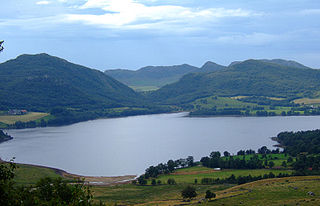
Gjesdal is a municipality in Rogaland county, Norway. It is located in the traditional district of Jæren. The administrative centre of the municipality is the village of Ålgård. Other villages in Gjesdal include Dirdal, Frafjord, Gilja, Gjesdal, and Oltedal. The municipality lies about 25 kilometres (16 mi) to the southwest of the city of Stavanger in southwestern Norway.

Randaberg is a municipality in Rogaland county, Norway. It is located in the traditional district of Jæren, at the northern end of the Stavanger Peninsula. The administrative centre of the municipality is the village of Randaberg.

Masfjorden is a municipality in the central part of Vestland county in Norway. The municipality is located in the Nordhordland district of the county. The administrative centre of the municipality is the village of Masfjordnes. Other villages in the municipality include Frøyset, Hosteland, Matre, and Solheim.
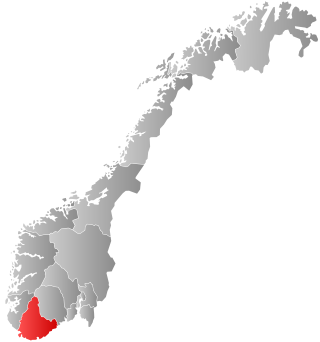
Hægebostad is a municipality in Agder county, Norway. It is located in the traditional district of Lister. The administrative centre of the municipality is the village of Tingvatn. Other villages in Hægebostad include Eiken, Haddeland, and Snartemo. The municipality encompasses the northern end of the Lyngdalen valley which follows the river Lygna.

Sirdal is a municipality in Agder county, Norway. It is located in the northwestern part of the traditional district of Lister. The administrative centre of the municipality is the village of Tonstad. Other villages in Sirdal include Bjørnestad, Haughom, Kvæven, Lunde, and Tjørhom.

is a municipality in Agder county, Norway. It is located in the traditional district of Lister. The administrative centre of the municipality is the town of Alleen. Some of the main villages in Lyngdal include Austad, Byremo, Fleseland, Hæåk, Konsmo, Korshamn, Kvås, Skomrak, Svenevik, and Vivlemo.
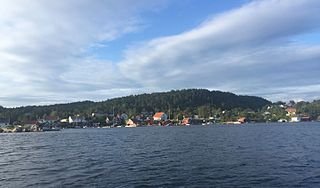
Søgne is a former municipality in the old Vest-Agder county, Norway. The municipality existed from 1838 until 2020 when it was merged with the municipalities of Songdalen and Kristiansand into the "new" Kristiansand municipality in what is now Agder county. It was located in the traditional district of Sørlandet, just outside of the city of Kristiansand. The administrative centre of the municipality was the hamlet of Tangvall. Hamlets and areas in Søgne include Ausviga, Eig, Høllen, Langenes, Lohne, Lunde, Ny-Hellesund, Trysnes, Vedderheia, Ålo, and Åros.

Flekkefjord is a municipality in Agder county, Norway. It is located in the traditional district of Lister. The administrative centre of the municipality is the town of Flekkefjord. The villages of Sira, Gyland, Rasvåg, Kirkehavn, and Åna-Sira are located in Flekkefjord.
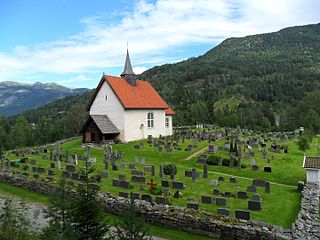
Seljord is a municipality in Telemark county, Norway. It is located in the traditional districts of Upper Telemark and Vest-Telemark. The administrative centre of the municipality is the village of Seljord. Other villages in the municipality include Flatdal and Åmotsdal.

Sykkylven is a municipality in Møre og Romsdal county, Norway. It is part of the Sunnmøre region. The administrative centre is the village of Aure. Other villages in the municipality include Ikornnes, Straumgjerde, and Tusvik.
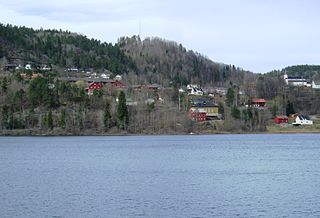
Gjerstad is a municipality in Agder county, Norway. It is located in the traditional region of Sørlandet, in the southeastern part of the county, along the border with Telemark county. The administrative centre of the municipality is the village of Gjerstad. Other villages in the municipality include Ausland, Eikeland, Fiane, Gryting, Østerholt, Rød, Sundebru, and Vestøl.

Vegårshei is a municipality in Agder county, Norway. It is located in the traditional district of Sørlandet. The administrative center is the village of Myra. Other villages in Vegårshei include Mo and Ubergsmoen.

Iveland is a municipality in Agder County, Norway. It is located in the traditional district of Setesdal. The administrative centre of the municipality is the village of Birketveit. Other villages in the municipality include Bakken, Skaiå, and Vatnestrøm.

Valle is a municipality in Agder county, Norway. It is located in the traditional district of Setesdal. The administrative centre of the municipality is the village of Valle. Other villages in Valle include Besteland, Brokke, Homme, Hovet, Rygnestad, Rysstad, and Uppstad.

Gratangen is a municipality in Troms county, Norway. It is part of the traditional region of Central Hålogaland. The administrative centre of the municipality is the village of Årstein.

Fjotland is a former municipality in the old Vest-Agder county, Norway. The 600-square-kilometre (230 sq mi) municipality existed from 1838 until 1841 and again from 1858 until its dissolution in 1963. The administrative centre was the village of Fjotland where Fjotland Church is located. The municipality covered the northern part of the Kvinesdalen valley in the present-day municipality of Kvinesdal.
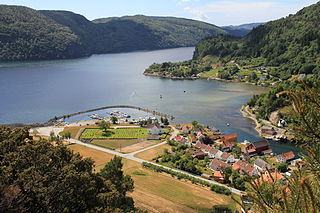
Feda is a former municipality in the old Vest-Agder county, Norway. The 66-square-kilometre (25 sq mi) municipality existed from 1900 until its dissolution in 1963. The administrative centre was the village of Feda where the Feda Church is located. Feda encompassed the far southern tip of the present-day municipality of Kvinesdal in what is now Agder county. It surrounded both sides of the 13-kilometre (8.1 mi) long Fedafjorden and the surrounding valleys.































